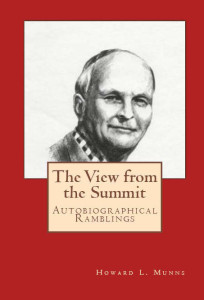I’ve talked about pacing before, but that was about the
pace of the story arc over the entire book. Today I’d like to get a little more specific about writing for pace in a particular sequence of events in a story, and also about emphasis.
Timing
Writing is nothing more than stringing together a bunch of words: verbs, nouns, pronouns, conjunctions. But when we are writing, our task is more than simply providing information to our readers. In fiction, especially, it’s all about recording and eliciting emotion. Giving our readers a sense of the timing of the action is a great way to support that emotion.
Let’s say my character, Hector Human, is running from an unknown pursuant down a dark street. The chaser is dangerous, deadly even — a predator. Hector is running for his life, even though he doesn’t understand why. He only understands the danger. How might we convey that?
Hector raced down the sidewalk. His legs churned. The panic in his brain sent hot pulses of adrenaline surging in his blood so it pounded in his ears. He hauled in great gulps of air as he ran. He fought the impulse to look behind him to see if his pursuant had closed the gap between them. He needed to watch where he was going. The inky depths between streetlights were littered with all manner of civil conveniences — mailboxes, metal trash containers, parking meters, tree wells — that during daylight posed no threat. Now, in the darkness, they became ghostly obstacles to his safety. His legs began to burn. He pushed them even harder. His lungs were aching. His coarse breathing echoed off the storefronts as he hurtled by. He had to find safety. He couldn’t go on like this much longer. Frantically his eyes searched the block ahead. He looked for lights, activity, any sign of gathering people that could forestall his attacker. Nothing. Just darkness. He ran on.
Showing not telling, the emotion is there. Passable, but what happens if we do this …?
Hector raced down the sidewalk, his legs churning, the panic in his brain sending hot pulses of adrenaline surging in his blood so it pounded in his ears. Gasping, hauling in great gulps of air as he ran, he fought the impulse to look behind him to see if his pursuant had closed the gap between them. He needed to watch where he was going; the inky depths between streetlights were littered with all manner of civil conveniences — mailboxes, metal trash containers, parking meters, tree wells — that during daylight posed no threat but now, in the darkness, became ghostly obstacles to his safety. His legs began to burn, the muscles cramping, but he pushed them even harder, not daring to slow down. His lungs were aching, the dry air rasping in his throat, his coarse breathing echoing off the storefronts as he hurtled by. He had to find safety; he couldn’t go on like this much longer. Frantically his eyes searched the block ahead, looking for lights, activity, any sign of gathering people that could forestall his attacker. Nothing. Just darkness. He ran on.
While the information given in both paragraphs is intrinsically the same, the pacing is quite different. In the first paragraph, the many short sentences each require a full stop in the reading, giving the action an abrupt, jerky effect. In the second paragraph, the longer sentences pull the reader forward, almost hurtling them into the next piece of information, no time to stop, no time to relax. The pace of the writing itself conveys the sense of panic. Imagine reading each of these paragraphs out loud. Reading the first one, you would have plenty of places to stop and take a breath between sentences. Reading the second, you might find yourself out of air before you got to a period and a good place to catch a breath. The writing not only mirrors the emotions of the character, but with any luck, it conveys that emotion to the reader, as well.
Similar ideas apply, in reverse, when writing about time going by slowly.
Hector paced the waiting room. The clock on the wall ticked off the seconds with dull thuds: tick … tick … tick. His brain registered the swirly pattern of the multi-colored carpet beneath his feet, the way the pattern changed as he walked from one side of the room to the other, then returned. Against one pale baseboard, he noted a loose strand of orange looping up from the close-cut pile around it. Every time he walked that direction now, his eyes strayed immediately to that one strand. Why didn’t the people here notice that when they vacuumed? Why didn’t they cut the damn thread so it was the same height as the rest? He tried to forget about the thread when he walked back the other way, tried to push it out of his mind, but of course it wouldn’t go. He changed his pattern, walking around the room rather than across it. But when he passed that side of the room, that baseboard, the orange thread stood tall and bright in the periphery of his vision. The clock ticked: tick … tick … tick.
In direct contrast to the chase scene, Hector’s world is now filled with small, pointless and annoying details. Nothing here is of any consequence. He’s waiting for something, but whatever it is, it doesn’t come. He’s left with only the stupid orange thread and the ticking of the clock. The short sentences and the inane details work together to give the impression of the annoyingly slow passage of time.
Emphasis
In the same way that a series of long sentences can convey the rush of time or a series of short sentences can communicate the slow passage of time, a single-sentence paragraph can create enormous impact. Let’s go back to Hector in his headlong run down the street.
Hector cast about for anything that might save him. His vision was beginning to swim, but suddenly he noticed a narrow alleyway opening up on his right. He veered into it, stumbling down the dark path, heedless of the stink and the damp. He half fell, half threw himself down behind some trash cans, his back to the dank wall behind him. Swallowing painfully, he tried to rein in his frantic breathing, willing his body to calm even as he kept wary eyes on the lamplit entrance to the alley. As he watched, a dark shadow fell across the opening.
Okay as far as it goes, but let’s try it this way:
Hector cast about for anything that might save him. His vision was beginning to swim, but suddenly he noticed an alleyway opening up on his right. He veered into it, stumbling down the dark, narrow path, heedless of the stink and the damp. He half fell, half threw himself down behind some trash cans, his back to the dank wall behind him. Swallowing painfully, he tried to rein in his frantic breathing, willing his body to calm even as he kept wary eyes on the lamplit entrance to the alley.
As he watched, a dark shadow fell across the opening.
The separation of the last sentence is a visual clue to the reader that this statement is important. Setting it apart gives it weight. The single-sentence structure gives it punch. It has much more of an impact than if it is simply tacked onto the end of the paragraph above.
I use all of these stylistic tools in my writing, and I find they give an added boost to the words themselves. The reader may not be aware of the nuances, but I believe they contribute greatly to communicating the emotions of the story.















 With all the reading I do, I’m very aware of how I feel about different characters in different books. There are times when I’ll go weeks — months, even — and not read a book that knocks me out. I begin to wonder if I’m getting jaded, but then, suddenly, a book comes along that I simply love and the characters are more like dear friends than two-dimensional sketches. These characters really grab me: make me laugh, make me cry, make me bite my nails with worry over their challenges. But they’re rare. Rarer than they should be. So it got me to thinking, what makes a really, really great character? Here’s my list, in no particular order.
With all the reading I do, I’m very aware of how I feel about different characters in different books. There are times when I’ll go weeks — months, even — and not read a book that knocks me out. I begin to wonder if I’m getting jaded, but then, suddenly, a book comes along that I simply love and the characters are more like dear friends than two-dimensional sketches. These characters really grab me: make me laugh, make me cry, make me bite my nails with worry over their challenges. But they’re rare. Rarer than they should be. So it got me to thinking, what makes a really, really great character? Here’s my list, in no particular order.





 Recently I stumbled across this post for
Recently I stumbled across this post for 






